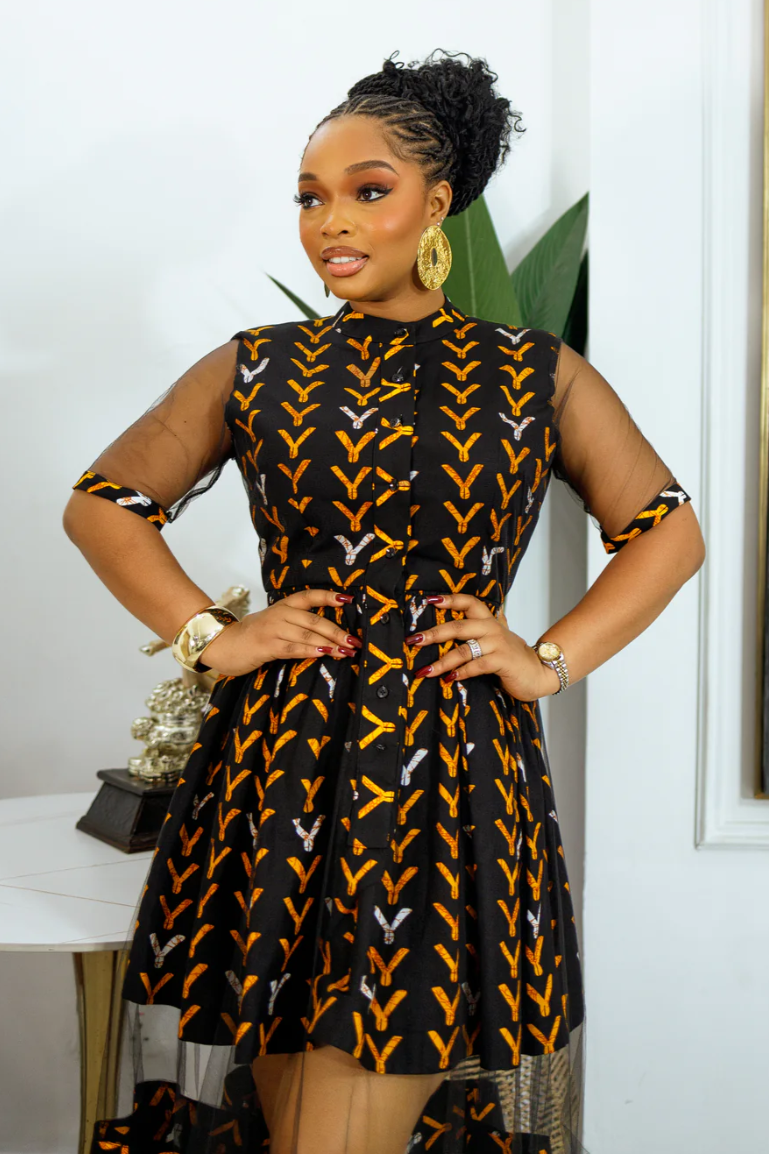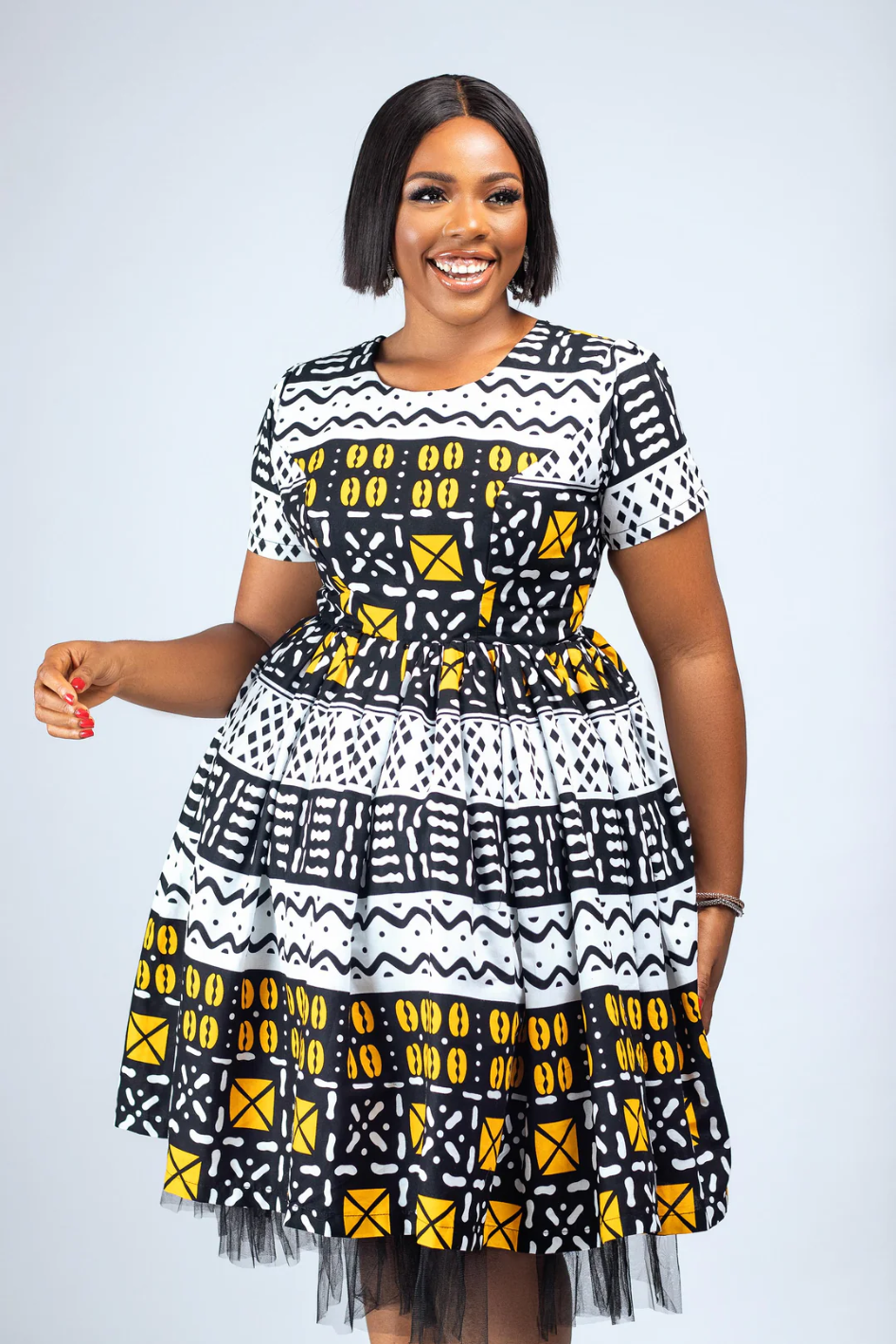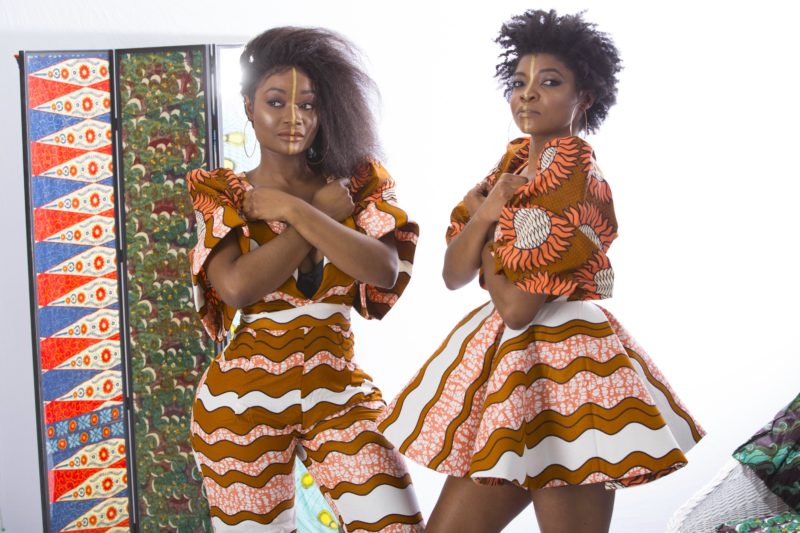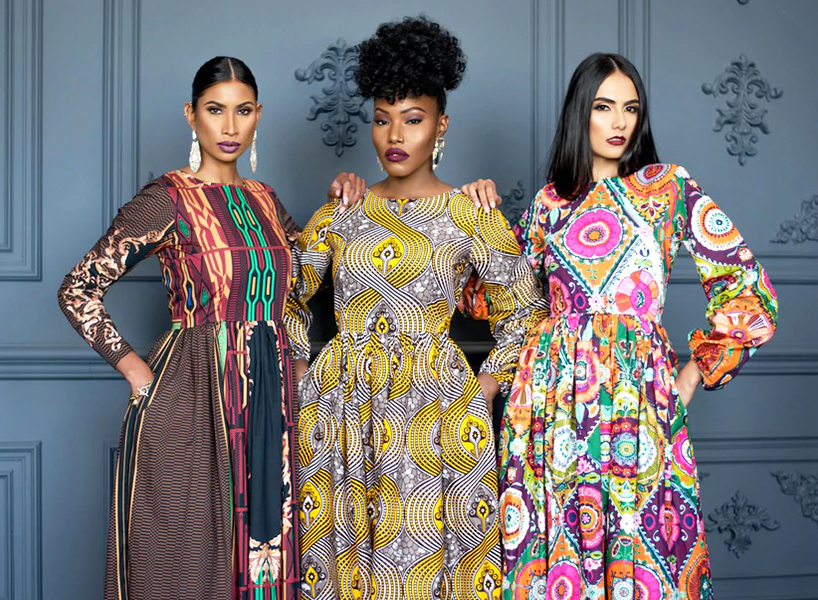The Beginner’s Guide to Wearing African Wax Print Clothing
Are you falling in love with African wax print fabrics and the clothing styles that are made with it? Perhaps you want to purchase some cute pieces but are somewhat overwhelmed with the variety of options online and you don’t know where to start from. Or even yet, you are wondering about cultural appropriation and how that might affect how you are seen and perceived in a piece of African attire. Well, you have come to the right place in search of answers. This is a beginner’s guide to wearing African wax print clothing. Let’s get you started and acclimatized to the world of prints, unpack your concerns about appropriating or appreciating various African cultures and discuss where and how to get yourself adorned in the amazing styles you’ve seen on others and have come to admire.

African clothing is as diverse as the continent itself with its varying cultures by region and their symbolic dress codes, all accompanied by significant meanings. For this reason, African fashion is hard to describe. However, there are some general similarities and features, which is the idea that traditional and even modern contemporary African clothing is characterized by vibrant prints and bold patterns. These colourful wax print fabrics made into diverse styles are what you may have seen widely and recognized clearly as African fashion. While that is also good, keep in mind that the fashion and culture is a powerful tool for individuality and self-expression and is not relegated to these depictions alone. Some popular African clothing styles include the Kaftan, Dashiki, Boubou and Agbada, each with its own particular style, silhouette and fabric.
African Prints are actually Dutch wax print fabrics, 100% cotton and do not stretch.
They are also known as African prints, Ankara or Kitenge with roots dating back to batik in Indonesia although they were adapted by the Dutch and adopted by the African market. I’ve already written an entire article about the history and origins of the African print, which provides more context. Its an easy read and will bring you up to full knowledge on this topic. While reading, it is important to note that these fabrics are made out of cotton and therefore, do not stretch. Keep this in mind when placing an order for a dress or other piece of clothing. You will want to get your measurements right and then cross reference with the brand’s size chart.
It is not cultural appropriation for non-Blacks to celebrate and wear African fashion
I am of the opinion that under most circumstances, it is not cultural appropriation for non-Blacks to celebrate and wear African prints in fashion. To further illustrate my points of view, I have written another article to unpack cultural appropriation, where I’ve broken down its meaning and included instances when its okay or not to wear African print clothing. If you want to own and wear a piece of African attire but are grappling with this issue, you should also read this article that I’ve highlighted for better understanding. Basically I said, “If you are being respectful, wearing with permission, and not exploiting the fashion or makers of the products in the process, then you are not at risk of appropriation.”
Don’t like bright colours? You can go for more muted and simple colour combinations
Granted, this might seem like a difficult thing to do but it is quite possible. If you are a simple person and a minimalist who does not like too many things to be going on at once with your clothes, you can opt for clothing made with the print fabrics that have just two or three colours in them. Go for black and white or earth tones like brown and beige. It could also include a small print, rather than a very big and bold one. Of course, you will have to be more intentional and meticulous with your search because African prints by nature, are very maximalist.
African fashion styling tips for beginners: Start with less is more and work your way up!
African wax print clothing is versatile and easy to style. The best thing you can do here is start with less is more by adding a small print item and then gradually incorporate more as your comfort level increases. Allow the emphasis to be on the prints themselves. You can mix and match your print clothes with other items but try to create a sense of balance in the overall look. Allowing the prints to be the focal point also means preventing other items of clothing from competing with them. Wear a print top with a neutral skirt or in reverse, a print skirt with a neutral top. Go for minimal accessories when wearing an all print outfit from head to toe. In certain circumstances, you can forgo the guideline about less is more and creating balance by wearing print over print, thus creating a clash that is inherently stylish in itself.
Check and washing instructions for African print clothing before purchasing
There are some general guidelines for washing and caring for African prints. Check out the details I outlined in the highlighted and linked article about this. Firstly, I always like to recommend that you ascertain the quality of fabrics the clothing is made with. It should be 100 percent cotton and the colours should be steadfast, meaning, they will not run when you wash them. Quality fabrics will cut your work in half when it comes to caring for them. For example, you will be able to machine wash them with no issues. Luckily, many brands who make these fabrics are paying attention and making sure the dyes used on the frabrics do not run. To be on the safe side, do not wash your colourful prints clothes with white garments. Always wash with like colours and if you are worried, you can always hand wash each of them separately.
Where to buy African wax print clothing online
There are many places to buy African print clothing. From the independent brands online to Etsy marketplaces. You can even buy the fabric and take it to your local seamstress who will bring your imaginative ideas for a custom outfit to life. Whichever one you choose, make sure you conduct your research into the brand you are buying from. During your investigation, ask and get answers to questions like, where is the brand based? If out of the country, do you have to pay custom duties and other fees on shipped items? What is the return and exchange policy? Do they have a cohesive online and social media presence? What information is shared about the designer or brand owner? These are just a few questions. You can create your own so that your research is thorough and informative.
Would you consider yourself as a beginner or a pro in wearing African prints and how do you style them?








